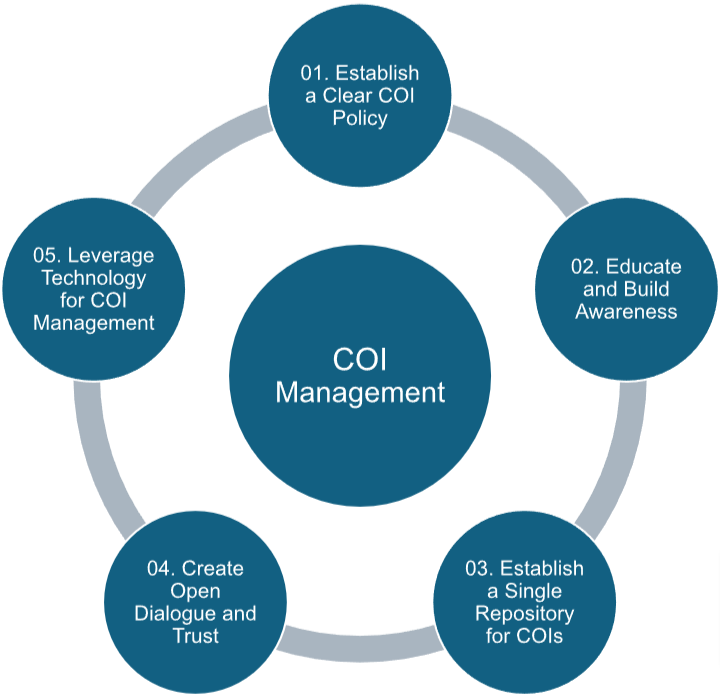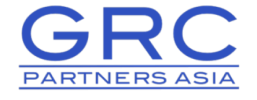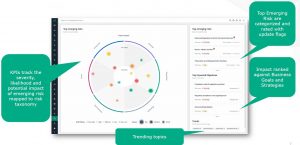Introduction - Understanding Conflict of Interest
A conflict of interest arises when individuals’ personal interests potentially interfere with their professional responsibilities. This can manifest in various ways, such as a manager making business decisions that benefit a family business or a board member influencing contract awards to relatives. Such conflicts, if not properly managed, can lead to ethical breaches, legal implications, and reputational damage to the organization.
Conflict of Interest (COI) management is a critical component of any organization’s governance, risk, and compliance (GRC) framework. Effective COI disclosure management ensures that potential conflicts are identified, assessed, and mitigated to maintain the integrity and reputation of the organization. This blog explores the key elements of a robust COI management system within a GRC framework and highlights the importance of transparency, education, and technology in managing COI.
The Role of Disclosure Management
Disclosure management involves the systematic process of identifying, documenting, and monitoring potential conflicts of interest within an organization. Employees and stakeholders are required to disclose any situations where personal interests could conflict with professional duties. This process helps organizations maintain transparency and mitigate risks associated with undisclosed conflicts. Automation should be a key in Disclosure Management for managing your COIs
Linking Conflict of Interest and Disclosure Management
Conflict of interest and disclosure management are intrinsically linked in the GRC framework. Effective disclosure is the first step in identifying potential conflicts of interest. Without a robust disclosure management system, organizations may overlook or be unaware of existing conflicts, leading to unchecked risks. Conversely, merely disclosing conflicts without a comprehensive strategy to manage and resolve them leaves organizations vulnerable to ethical lapses.
Best Practices for COI Management

- Establishing a Clear COI Policy
A well-defined COI policy is the foundation of any effective COI management program.
The policy should outline the following:
- What constitutes a conflict of interest
- The categories of conflicts that need to be disclosed
- The consequences for non-declaration.
It is essential to define the consequences for non-declaration to serve as a powerful deterrent and emphasize the importance of adhering to disclosure requirements. The policy should also specify:
- When conflicts of interest need to be disclosed
- The frequency of updates employees must provide for their disclosures.
By setting clear guidelines for updates, organizations can proactively manage potential conflicts of interest and address any changes that may arise over time. Consider tailoring your policy to align with your company’s specific business practices and geographical areas of operation, as certain regions may pose higher risks for conflicts of interest.
Policy Management is the first pillar of an effective COI Program
- Educating and Building Awareness
One of the significant challenges in COI management is drawing employees’ attention to the conflict-of-interest policy and ensuring they recognize potential conflicts of interest in their daily work. Regular educational campaigns, conducted periodically, can actively draw employee attention to the conflict-of-interest policy.
A conflict-of-interest questionnaire is an extremely valuable tool in this process.
Once employees have familiarised themselves with the conflict-of-interest policy/policies, they will be required to complete the conflict-of-interest disclosure questionnaire. The questionnaire is designed to extract crucial details related to potential conflicts of interest, leaving no room for ambiguity or oversight.
The completed questionnaire then undergoes a rigorous review process by the compliance team. Effective tools not only streamline the disclosure process but also ensure that all relevant information is captured, enabling organizations to take appropriate actions based on a thorough understanding of the disclosed conflicts.
Additionally, consider conducting interactive training sessions or workshops to educate employees on the importance of COI disclosure, common scenarios, and the reporting process and forming relevant key metrics around your training program.
Automating Disclosure Questionnaires to employees, and conducting periodic campaigns on ‘Training and Awareness’ holds the key to success for a COI Program
- Establishing a Single Repository for COIs
Relying on employees to email their conflicts of interest is a cumbersome approach. Challenges include compliance officers to manually forward conflict of interest declarations to the appropriate parties.
Embracing digital tools represents the best practice for conflict-of-interest management. An effective tool offers numerous advantages beyond facilitating education, awareness, and policy management. By implementing such tools, organizations establish a centralized repository specifically designed for storing COI disclosures, eliminating the reliance on cluttered email inboxes.
Effective tools provide compliance officers with immediate access to critical information at a glance. They can determine who has read the conflict-of-interest policy, identify employees who have declared conflicts of interest, and instantly view the status of each request, including submission dates and the reviewing party involved. This centralized approach saves manual work and enables compliance officers to focus on more strategic and value-added activities.
Establish the correct framework and repository for your COIs, explore various tools to align your organization’s needs against the offering of the tool, leverage technology to get started with COI management
- Creating Open Dialogue and Trust
Fostering the right culture is essential to ensuring the trustworthiness of any conflict-of-interest disclosure management program. It is imperative that employees feel both comfortable and secure when it comes to disclosing potential conflicts. Creating an atmosphere that encourages individuals to come forward without fear of unfair review procedures, compromised confidentiality, or retaliation is of utmost importance. Moreover, leadership plays a vital role in setting the tone for the organization. Leaders should actively encourage and value conflict of interest disclosures as an integral part of maintaining ethical conduct and compliance. By making their own conflict of interest disclosures, leaders can instill confidence among employees, reinforcing the belief that their disclosures will be treated seriously and with the utmost respect.
Conduct and culture set the tone for COI management in most of the organization, the right culture trends set transparency ultimately enhancing the positive mindset of employees to declare their disclosure.
- Leveraging Technology for COI Management
The role of technology in COI management cannot be overstated. Best-in-class programs have the leading software powering them. COI requires a robust tool that streamlines complex workflows, automates notifications to relevant parties, and is tailored to the organization’s unique needs. It is essential to select the right conflicts of interest vendor. Your technology partner can make or break how impactful your well-thought-through COI plan will be. The right disclosure management platform will centralize the process and enable you to track employee activity and collect all relevant information. This ensures that all conflicts of interest are managed in a transparent and efficient manner, reducing the risk of non-compliance and maintaining the integrity of the organization.
Summary of key steps in COI management
- Establish a Clear COI Policy: Define what constitutes a conflict of interest and outline the consequences for non-declaration. Ensure the policy is tailored to your company’s specific business practices and geographical areas of operation.
- Educate and Build Awareness: Conduct regular educational campaigns and use conflict of interest questionnaires to streamline the disclosure process. Provide interactive training sessions or workshops to educate employees on the importance of COI disclosure and common scenarios.
- Establish a Single Place of Storage for COIs: Implement digital tools to manage COI disclosures, eliminating the reliance on email inboxes. These tools provide compliance officers with immediate access to critical information and streamline the disclosure process.
- Create Open Dialogue and Trust: Foster an atmosphere that encourages employees to come forward without fear of unfair review procedures, compromised confidentiality, or retaliation. Leaders should actively encourage and value conflict of interest disclosures as an integral part of maintaining ethical conduct and compliance.
- Leverage Technology for COI Management: Select a robust tool that streamlines complex workflows, automates notifications to relevant parties, and is tailored to your organisation’s unique needs. Ensure that your technology partner is well-suited to support your COI management program.
SAI360 GRC platform offers an out-of-the-box COI Management Module.






